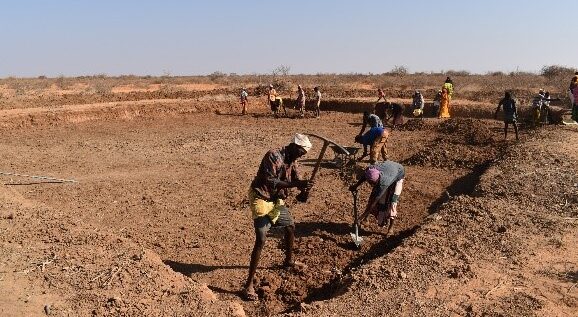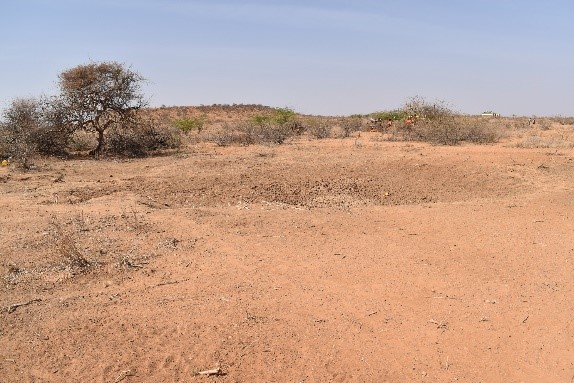Figure 2: Issack Kora earth pan before desilting and expansion and expansion
At the beginning of 2022, CARE through the BORESHA project has been implementing an integrated emergency and early recovery response to support affected vulnerable communities in Mandera County following the prolonged drought that formed a multitude of humanitarian shocks in the region. Some of the core activities of the response include rehabilitation of degraded rangeland through cash for work, Water points rehabilitation, and resource-based conflict among the other activities. Of special importance is the rehabilitation of water points which interludes communities from the regular severe scarcity of water ensued by the recurring long droughts consistently experienced in the county. The main impacts of droughts in Mandera County are regarded as acute water shortages, mass livestock deaths, and resource-based conflicts that had in many scenarios led to deaths and displacement of people.
The poor state of water storage infrastructures exacerbated the acute water shortages that were caused by rainfall deficiency. Most of the county’s population depends on water pans and underground tanks for their domestic and livestock water needs despite these facilities not being available in all the villages. Even for the fortunate villages with these water storage infrastructures, the maintenance is very poor. According to the rapid drought assessment report conducted by the Mandera County department of water services in Aug 2021, an estimated 60% of earth pans in Mandera county need desilting.
With funding support from EUTF-BORESHA III Project, CARE through its Cash For Work interventions has rehabilitated two earth pans and plans to construct/rehabilitate and solarize 13 more water sources. The rehabilitated water points are anticipated to benefit from the March-May (MAM) rains and serve an estimated 1,164 households.

Figure 2: Isaack Kore earth pan during desilting and expansion
Issack-Kora Village in Mandera North Sub-County where Mohamed Ibrahim, a 50-year-old father of ten (6 boys & 4 girls) lives, is one of the villages that benefited from the rehabilitation of water points as their second main water source which is earth pan desilting and expansion. During the initial field assessment, despite being the second main water source for Issack-kora residents, the earth was found to be very small, dried, covered by silt & lacked protective fencing and wall. Mohamed narrated that during the last rainy season the earth-pan water sustained them for one complete month before resorting to the underground storage water tank. They often experience water shortages once the pan dries up and the pressure is put on the two underground tanks. He added on to say that they use the same tank to water their animals. “The water in the tank won’t last long and we often pay water truckers to supply us from river Dawa in Rhamu town, that is 15 KM away and during such prolonged drought periods, we suffer because we have to purchase water”. He said
Mohamed delineated how he was coping during the drought period given such an unreliable water source. “I migrate far with my small herds during the drought periods in search of water and I must provide food for the family during such period too”.
CARE’s intervention came in handy with the provision of water points rehabilitation. The organization expanded the Issack-kora water pan by engaging 50 cash for work laborers for twenty days to enable households to earn an income and provide for their families during this drought period.
Mohamed, appreciatively said, “BORESHA has done a great favor accepting and acting upon our request, and once it rains the pan will obtain water which can sustain us for three months.’’ Mohamed continued by thanking the organization, “Thanks to CARE and BORESHA project, Issack-Kora residents will not face perennial water shortages anymore.”
Communities living in this village are now certainly getting water for their domestic needs comfortably. The organization has also planned training for the water resource users’ association committee for effective management of the rehabilitated water pan.

